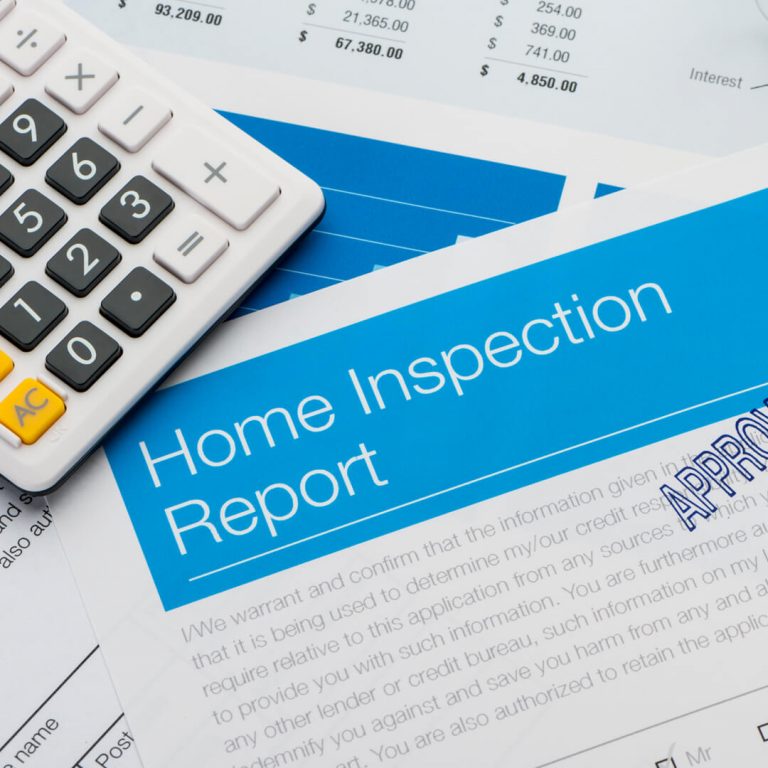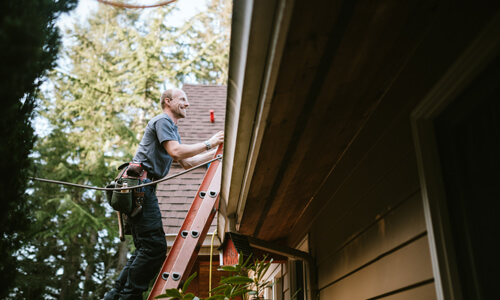If you’re under contract for a new home, you’ve likely had an inspection conducted on your new home. This inspection is an important part of the home-buying process; it can help you find any major defects in the home, such as a faulty roof or dying HVAC system, which may prompt you to walk away from the deal. Alternatively, the seller can choose to repair any areas needing major work before the closing.
In addition, a home inspection often reveals other, smaller recommendations the seller is not required to fix. This can include a long list of items that need minor repairs or replacements, such as a leaky faucet, overstuffed gutter, or an insecure stair railing. Often, in the rush to close on the home and all the tasks that must be tended to before the big move, these repairs are forgotten about and never get fixed.
Some homeowners mistakenly assume that it’s no big deal to leave some repairs on their newly-purchased home unfixed. Unfortunately, nothing will fix itself. Instead, the longer you wait to make a repair, the more likely it is that you will need to make more extensive and expensive repairs or replace the faulty system, appliance or part. Consequently, it’s best to make any necessary repairs on your home as quickly as possible.
Here’s what you need to know about following up on a home inspection.
Hold onto the list of recommendations.
Most inspectors will leave the potential buyer with a list of items that need repairs. While some will require urgent attention, the less-important items on the list can be forgotten about and never tended to at all. You may not have the time or resources to fix everything on the inspector’s list before you move, but it’s a good idea to hold onto that list for future reference. File the list in a safe place so it won’t get lost during the move. You can also snap a photo and upload it to a digital storage space so you can always find it if the original document is misplaced.
Categorize repairs according to urgency.
Once the dust has settled after your move and you’re ready to tackle the household repairs you haven’t yet gotten to, dig out your list and categorize repairs by urgency. Look for repairs that can cause extensive damage if left unfixed, such as a leaky pipe, faulty exterior drainage or the presence of mold or mildew. These should be tended to as soon as possible. Cosmetic repairs, on the other hand, can be delayed without major consequences. Create a new list with all the repairs written in order from most to least urgent.
Identify what you can do on your own.
It’s almost always cheaper to do home repair projects on your own. However, there are some areas that are best left to the experts. In addition, if you will need to spend a lot of money on supplies you will use just for this one-time repair, it can actually be cheaper to call in the experts. Keeping these two factors in mind, look through your list carefully to see what you can realistically do yourself.
Start working through your list.
Now that you’ve sorted your list according to urgency and you’ve identified which repairs you can do on your own, you’re ready to start tackling the repairs. Start with the most urgent repairs, and set aside time on weekends for the repairs you plan to do on your own. When hiring professionals, be sure to do your research carefully and to ask for references of past clients.
Uphold general household maintenance.
It may be a while before your entire list of repairs is complete. To help prevent further damage, and to keep your home in the best condition at all times, follow these tips for general upkeep and maintenance:
- Make sure faucets and showerheads are completely turned off when not in use.
- Keep the air clean by vacuuming and dusting regularly.
- Look for discolored spots on ceilings and walls, which can indicate an internal leak.
- Keep your home heated in very cold weather, even when you’re not home, to prevent freezing pipes.
- Drain your outdoor sprinklers completely before turning off for the winter.
- Keep all trees and shrubs near your home well-trimmed.
- Control moisture levels with a dehumidifier or humidifier, as necessary.
- Clean your dryer vent and all heating vents regularly.
A home inspection is an important part of the home-buying process. Don’t forget to follow up on the list of recommended repairs!






Comments Section
Please note: Comments are not monitored for member servicing inquiries and will not be published. If you have a question or comment about a Quorum product or account, please visit quorumfcu.org to submit a query with our Member Service Team. Thank you.